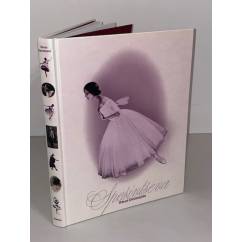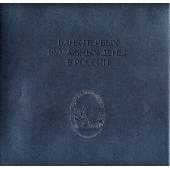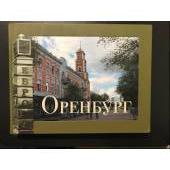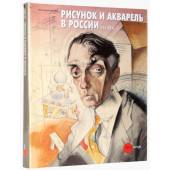
No products
Product successfully added to your shopping cart
There are %d items in your cart. There is 1 item in your cart.

Categories
- Albums (2078)
- Antique (before 1850) old books (before 1941) (582)
- Art and culture (5322)
- Audiobooks, compact discs (CD) (119)
- Autographed books (243)
- Board games (19)
- Books for school (4668)
-
Books in foreign languages
(8462)
- Books in Altai (4)
- Books in Azerbaijani (47)
- Books in Belarusian (46)
- Books in Bulgarian (2)
- Books in Dutch (2)
- Books in English (6633)
- Books in Estonian (10)
- Books in Finnish (7)
- Books in French (43)
- Books in Georgian (37)
- Books in Greek (2)
- Books in Hungarian (6)
- Books in Italian (12)
- Books in Japanese (7)
- Books in Karelian (3)
- Books in Kyrgyz language (6)
- Books in Latvian (46)
- Books in Lithuanian (7)
- Books in Norwegian (4)
- Books in Polish (14)
- Books in Portuguese (2)
- Books in Slovak (2)
- Books in Spanish (17)
- Books in Swedish (3)
- Books in Tajik (34)
- Books in the Adyghe language (3)
- Books in the Balkar language (8)
- Books in the Bashkir language (73)
- Books in the Buryat language (5)
- Books in the Kalmyk language (7)
- Books in the Karachai language (1)
- Books in the Komi language (5)
- Books in the languages of the peoples of the Caucasus (7)
- Books in the Mari language (17)
- Books in the Mokshan language (1)
- Books in the Mordovian language (3)
- Books in the Nogai language (1)
- Books in the Tatar language (101)
- Books in the Udmurt language (10)
- Books in the Yakut (Sakha) language (27)
- Books in the Yarzyan language (2)
- Books in Ukrainian (977)
- Books in Uzbek (9)
- Chuvash language books (29)
- Kazakh language books (8)
- Business. Economy (1626)
- Calendars (41)
-
Children's Literature
(10362)
- Books for parents (355)
-
Children's creativity and leisure
(908)
- Children's games. Experiments and experiments (15)
- Coloring pages (12)
- Crafts, cooking for children (6)
- Drawing for children (11)
- Make with your own hands (29)
- Modeling, application (7)
- Organization of children's parties (2)
- Origami, paper craft (5)
- Puzzles, crosswords for kids (7)
- Questionnaires, diaries, albums (1)
-
Educational and educational literature for children
(1735)
- Attention. Imagination. Memory (26)
- Basic security (4)
- Creative development (46)
- Foreign languages (101)
- General development. Manuals, reference books (83)
- General preparation for school (43)
- Introduction to the outside world (69)
- Logic. Thinking (30)
- Math and counting (42)
- Teaching reading and writing (89)
-
Educational literature for children
(768)
- Biographies for children (37)
- Books for boys (21)
- Books for girls (19)
- Culture, art, religion (49)
- Encyclopedias, reference books and other educational literature for children (181)
- History for children (87)
- Nature and the environment (241)
- Psychology. Etiquette (12)
- Science, technology, transport (54)
-
Fiction for children
(4341)
- Books for kids (111)
- Books on cartoons and films. Comics (81)
- Detectives and adventures for children (193)
- Foreign prose for children (307)
- Myths. Legends. Historical prose for children (66)
- Poetry for children (146)
- Russian prose for children (414)
- Science Fiction, Fantasy and Horror for Kids (116)
- Tales (499)
- Tales and stories about animals (145)
- Soviet children's books (894)
- Toy books (40)
- Collected works. Multivolume editions (3693)
- collection sets (50)
- Comics (53)
- Cookery (1369)
- Dictionaries. Phrasebooks (1318)
- Electronic books (10)
- Encyclopedia (1018)
- Engravings (7)
- Feng Shui (113)
- Fiction (84414)
- German and Germany (35907)
- gramophone records, vinyl (131)
- Guides (2045)
- Healthy lifestyle. Healthy eating. Fitness (1825)
- History (9779)
-
House. Life. Leisure.
(7724)
- Dom. Life (3173)
- Erotic books, books about sex, kamasutra (193)
- Hobby. Leisure (1656)
- Reference Literature (2202)
-
Sport
(952)
- Aerobics. Fitness. Yoga. Dancing (31)
- Board games (155)
- Combat and martial arts (81)
- Extreme sports (12)
- Gymnastics. Light and weightlifting (8)
- Olympic Games (13)
- Other sports (51)
- Physical culture and sport (72)
- Self-defense. Survival (20)
- Sport games (23)
- Tourism (85)
- Water sports (28)
- Winter sports (18)
- Kits (different books) (139)
- Kits (magazines) (60)
-
Magazines and newspapers
(2566)
- Architecture, interior (9)
- Astrology, esotericism (39)
- Bills (233)
- Calendars 2020 (1)
- Calendars 2021 (3)
- Cars, hunting, fishing (14)
- Celebrities, ZhZL (36)
- Children's magazines (11)
- Computer, technology (3)
- Cooking and Recipes (24)
- Crosswords, Scanwords (4)
- Editions with TV program (134)
- Entertainment magazines (7)
- Fashion, style, beauty (17)
- History (111)
- Hobbies, interests (106)
- Home, family, leisure (76)
- House, garden, vegetable garden (35)
- Literature, theatre, music (235)
- Magazines for men (210)
- Magazines for parents (2)
- Magazines for women (110)
- Medicine, health (154)
- Religion (10)
- Russian press abroad (483)
- Science, technology, fantasy (169)
- Sewing, knitting, needlework (8)
- Society, politics (635)
- Special Editions (57)
- Travel, countries (14)
- Maps, atlases (651)
- Military business. Weapons. Special services (4052)
- Miniature books (149)
- Music. Sheet music (1027)
- Postage stamps (92)
- Postcards (191)
- Posters (37)
-
Professional, educational literature
(24717)
-
Applied sciences. Technique
(2521)
- Agriculture. Veterinary medicine (40)
- Architecture (358)
- Chemical industry (104)
- Construction (445)
- Design (136)
- Energy (68)
- Engineering. Instrumentation (184)
- Food industry (19)
- Jewellery (22)
- Life safety (46)
- Light industry (39)
- Metallurgy (28)
- Mining (83)
- Nanotechnologies (5)
- Oil and gas industry (53)
- Other industries (101)
- Polygraphy (8)
- Radio engineering. Electronics. Communication (262)
- Technical Sciences (330)
- Technology of production (100)
- Timber and wood chemical industry (13)
- Transport (182)
-
Computer Literature
(475)
- Administration. Information security (4)
- Computer for … (16)
- Computer networks. Internet (23)
- Databases (8)
- Design systems (CAD/CAM) (1)
- General questions (41)
- Graphics, design, multimedia, games (27)
- Hardware (4)
- Informatics (27)
- MS Office. Microsoft office programs (11)
- Operating systems (12)
- PC work for beginners (18)
- Programming languages and environments (37)
- Humanities (8857)
-
Legal Literature
(1014)
- Civil law (54)
- Civil procedural law. Judiciary (8)
- Comments (12)
- Constitutional law. Administrative law (30)
- Criminal law (40)
- Criminology. Criminalistics (37)
- Customs law (8)
- Financial law (11)
- International law (34)
- Labor law. Social security law (9)
- Land law. Environmental law (3)
- Law enforcement agencies (23)
- Law in general. History and theory of state and law (30)
- Other branches of law (23)
- Regulatory acts. Reference literature (19)
- Right in everyday life (17)
- Textbooks and teaching aids (43)
- Workshops and practical aids (6)
-
Medicine and Health
(2431)
- Applied Medicine (41)
- Clinical Medicine. Internal Medicine (21)
- Cosmetology (20)
- Fundamentals of Medicine. Healthcare System (26)
- General pathology. General therapy (19)
- Narcology (12)
- Nervous system (29)
- Other branches of medicine (89)
- Pediatrics (52)
- Pharmacology. Toxicology (21)
- Popular and alternative medicine (1111)
- Psychiatry. Neuropathology. Sexopathology (71)
- Surgery (18)
- Monographs (1111)
- Natural sciences. Mathematics (2204)
- Social Sciences (5595)
-
Applied sciences. Technique
(2521)
- Religion. Esotericism (6347)
- Russian Abroad (books published abroad) (2589)
- Russian language (769)
- Russian language for children (Textbooks) (152)
- Soviet books until 1992 (12923)
- Yoga Books (159)
- Show All
More info
The publication is dedicated to the great classical dancer of the 20th century - Olga Spesivtseva (1895-1991). Text in Russian and English. Upon learning that her family wanted to write a book about her, Olga Spesivtseva, she replied from Europe: “You knew little about me. That's why I don't want you to write about me now. Of course, it will be wrong ... ". And then quite mysterious: "The future will show something else ...". The book published by the Art Deco publishing house will help just fill in the image of the true Spesivtseva. The album about Spesivtseva is the fourth in the Legends of Russian Ballet series, published since 2006 by the St. Petersburg Museum of Theater and Musical Art. Previous ones about Kshesinskaya, Pavlova, Nizhinsky (the next one about Karsavina) appeared one after another and immediately diverged, despite the tasteless, admittedly, design as a whole, sometimes simply ruining the value of self-sufficient historical photographs (artist M. Bychkov). But the case with Spesivtseva is different: the remaining and unknown facts and unpublished materials compensated for partly unprofessional design. For the first time (finally!) Almost the entire American diary of Spesivtseva has been published in Russian. "Almost" - because the compilers Elena Fedosova and Valery Golovitzer decided to publish the most valuable fragments for the history of ballet, and decided to leave the internal streams of consciousness, open threads of events outside the book about ballet. There are also many little-known photographs in roles and portraits, which instantly read the line of fate. It follows from the diary that, at least in the St. Petersburg-Petrograd period, it was not the ballet Giselle, in which she became famous throughout the world and where she approved Spesivtsev's canon, that was most dear to her, but Swan Lake. Perhaps because she waited for him by the age of 28, besides, he became the last in her repertoire of her beloved Mariinsky Theater: the last performance in December 1923 was also her debut in Lebedin. There is a famous photo - the pose of Odette, bowing her head on the amazing Spesivtsev's hand, one that attracts tension and fragility at the same time. We read about “Swan” in her diary: “All the acts are good, there is one, there is another, but the third is my whole soul. Neither grief, nor sadness, humility - tortured, suffering ”(events of December 8, 1923). He writes down four days later: “There is an approach in this ballet, while in Giselle it is not. Swan song, the swan sings before death, for the first and last time, the last. In the summer of the same 1923, he writes about his vacation in the Caucasus: “The sea is noisy, as if complaining. The beauty of nature emphasizes weakness - hopelessness. And on Christmas the following year, 1924, she arranges a Christmas tree for children from the Asylum for the Elderly Artists, in which she and her brother and sister were once identified in distress - she did not forget anything. Perhaps she felt that she was saying goodbye to home; perhaps a scene from our own childhood surfaced before our eyes (“we, the children, were waiting for the cart to arrive at the barn to pour the grains and, together with the pigeons, flew in to swallow the scattered grains”) and that was real help? Meanwhile, she continues her studies in the unheated halls of the hungry, cold Petrograd, you stop and steam comes out of your mouth, and for a person suffering from tuberculosis, this is certain death. He writes in his diary: “Moral depression”, and suddenly a different tone: “Separate sobriety from life and envelop yourself with it. Then there will be enough time and energy. Work". In everyday group shots, she looks incredibly haggard. On stage photos, everything is different, but there is no smile anywhere. In 1924, for the umpteenth time, she went abroad for treatment, but remained at the Paris Opera. The cover of the album features the famous photograph from the second act of Giselle by Lipnitsky, taken in a Parisian studio in the second half of the 1920s. "Giselle", alas, has become a real reflection of her fate. The ingenious Giselle could not but go to the end without giving her soul to art itself, without sacrificing to the goddess Terpsichore. In "Giselle" her whole subsequent life is read. At the end of the scene of madness (an amateur recording of 1932 has been preserved) there is a moment when her mother supports her, and she cannot walk at all, hanging in her arms - her arms are thrown like whips, her legs are bent down like a wounded doe. She was familiar with a similar condition from childhood, when little Olenka was in the hospital: “In addition, I have dangling legs - they are like rags. They carried me in their arms ... ”(events of 1901). In a short scene of insanity, a loss of reason and an influx of memories are played, as well as a desire to prolong - to slow down the passage of time and relive the past. A short stage moment turned into a long 20 years, when Spesivtseva was kept in a ward with 18 mentally ill people, they did not listen to her, they treated her along with everyone, and memories then became for her the only thread connecting her with life. Memories are not an image of her subsequent life, but life itself. A life on stage and a life-memory of the stage is all she had. Exactly the same two acts as in the ballet "Giselle". It is clear now that the production of rag ballet puppets extended her life. She mainly made Nijinsky dolls - the Young Man from Chopiniana, the Phantom of the Rose and the doll of the sleeping Girl from the Phantom of the Rose. She danced The Phantom of the Rose with Nijinsky in 1916, and she repeatedly recalls him in her diaries. So it seemed to her that she was approaching home, the Mariinsky Theater, her native places. In another life, in which she existed in the clinic since 1940, a savior appeared straight from heaven. Unknown young man. In the early 1950s, twenty years after her last performance in Giselle in Paris, an American student writer who was in love with Spesivtseva’s photographs raised a fuss and began looking for her. Through Romola Nijinsky (at that moment he was collecting materials on Nijinsky) he found her in a city clinic near New York under the name "patient N 360446". Paul Fern is a new name in the fate of Spesivtseva and an unexpected discovery of this book. It was he who found a Russian-speaking doctor, and they began to really treat her, it was he who arranged the move to the farm of Alexandra Tolstaya, and it was he who took care of her ticket to Swan Lake (1964 tour of the Kirov Ballet in America). The story of his asceticism, perhaps, does not add much to the great image, but it clarifies a lot on a human level regarding her environment - Lifar and Dolin, whose stories about their participation in the fate of Spesivtseva look thus unreliable. The monument on the grave of Olga Spesivtseva (1895-1991) is simple: a stone cross, reminiscent of the cross on the grave of her most famous heroine. Giselle did not die - she fell asleep. During his lifetime, Spesivtsev managed to shoot and release a film called "The Sleeping Ballerina". So, there is a quote from a letter to Sister Zinaida, dated 1963 (Zinaida's Leningrad letters have not yet been published), where she is clearly aware of everything and remembers the passage of years. Now we will never forget the memories of the “weeping spirit” (as the famous critic Akim Volynsky called Spesivtsev). Vyazovkina Varvara
Data sheet
| ISBN | 978-5-89576-024-6 |
| Publisher | Art Deko. Санкт-Петербург. 2009 |
| Bookbinding | твердый переплет, большой формат, фотоиллюстрации, 210 стр. |
All author\'s books:
Seller Info/Map |
Seller type: Company (business)
Подробнее
Volbedingstr. 2 A2-03
Leipzig, 04357
Germany
03416870612



































